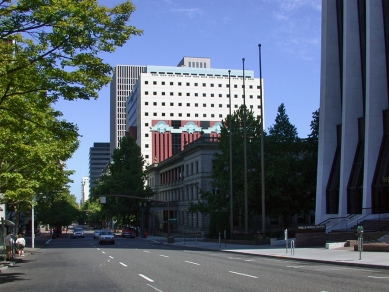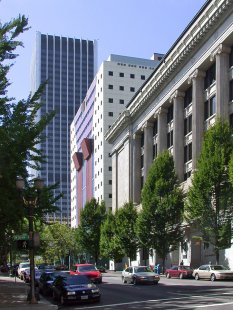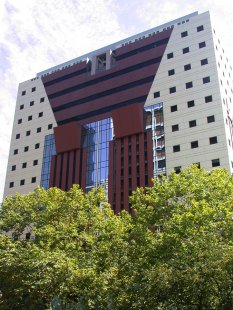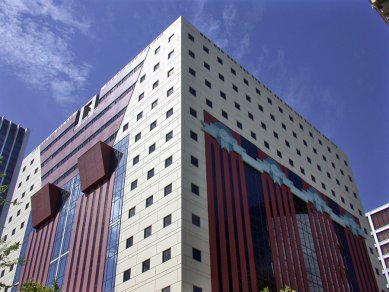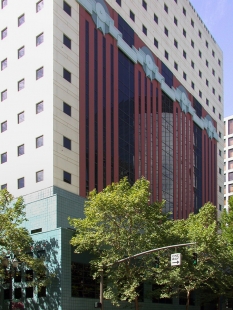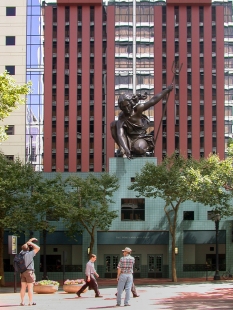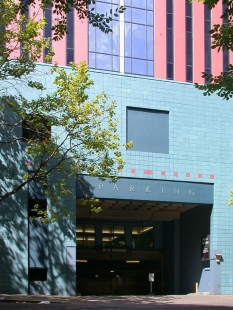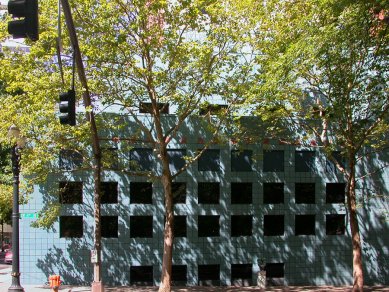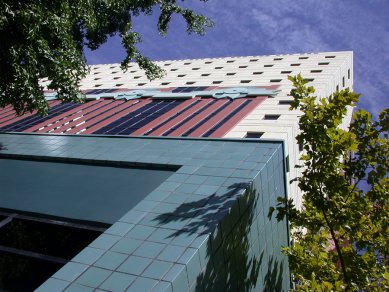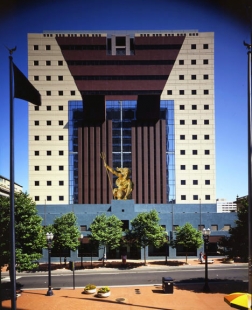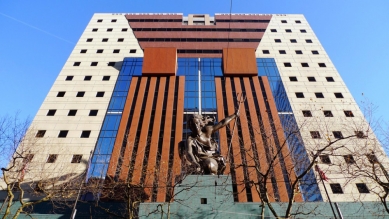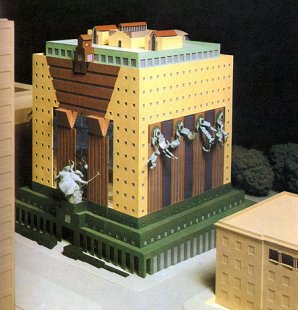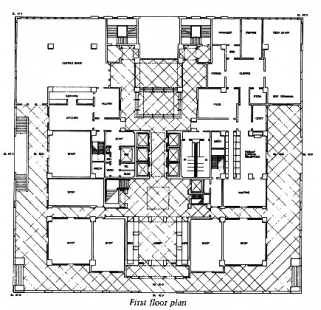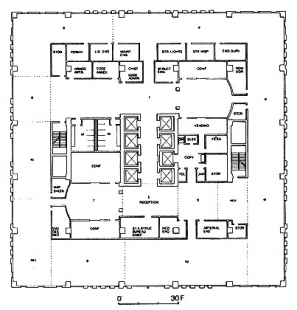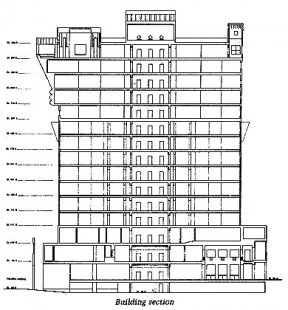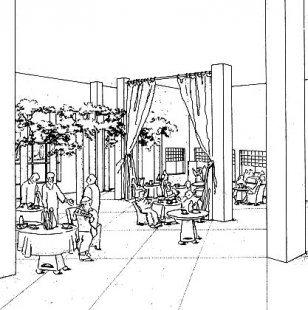
Portland Municipal Services Building

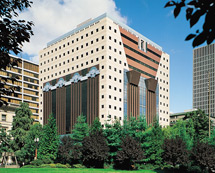 |
Sylvia Hart Wright. Sourcebook of Contemporary North American Architecture: From Postwar to Postmodern. p39.
"The Portland Building was a design-build competition sponsored by the city of Portland, Oregon. Located on a 200-foot square downtown block, the building will house the city's minicipal offices. This particular site offers a rich and special setting characterized by the adjacent City Hall and County Courthouse buildings on two sides, and the public transit mall and the park on the other two sides. The design of the building addresses the public nature of both the urban context and the internal program. In order to reinforce the building's associative or mimetic qualities, the facades are organized in a classical three-part division of base, middle or body, and attic or head."
Michael Graves: Buildings and Projects 1966-81, p.195
"While any architectural language, to be built, will always exist within the technical realm, it is important to keep the technical expression parallel to an equal and complementary expression of ritual and symbol. It could be argued that the Modern Movement did this, that as well as its internal language, it expressed the symbol of the machine, and therefore practiced cultural symbolism. But in this case, the machine is retroactive, for the machine itself is a utility. So this symbol is not an external allusion, but rather a second, internalized reading. A significant architecture must incorporate both internal and external expressions. The external language, which engages inventions of culture at large, is rooted in a figurative, associational and anthropomorphic attitude."
Michael Graves: Buildings and Projects 1966-81, p.11
0 comments
add comment


